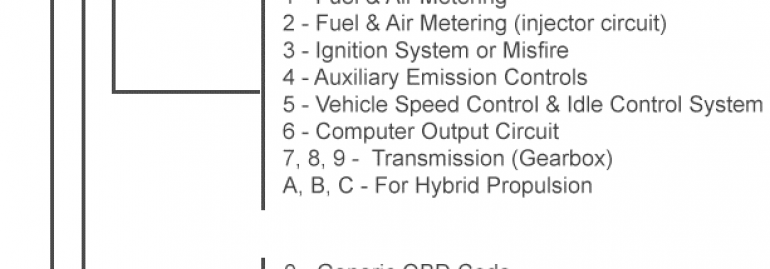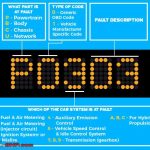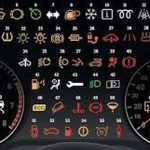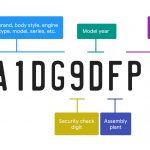Modern vehicles are equipped with computers that manage the overall performance of the vehicle. The computers also issue trouble codes to notify the driver of problems. Depending on the code, it may be necessary to have a mechanic look at the vehicle to determine the cause of the problem. Here are some of the most common problems and the codes for them. You can also learn how to interpret trouble codes for cars. If you encounter any of these problems, consult a professional who specializes in car repairs.
Diagnostic trouble codes
Diagnostic trouble codes for cars are strings of characters that are unique to each car. These codes are composed of five characters: powertrain (B-codes), chassis (C-codes), body and chassis components, and user network (U-codes). Each of these codes refers to a specific function or issue in the vehicle, and their first digit will tell you whether the code is generic or manufacturer-specific. To decipher the meaning of each code, follow these steps:
The problem is that not every car will generate a trouble code. And not all problems are serious. For instance, a DTC for cylinder misfire can indicate that the sensor circuit is not within spec, or that the emissions control system is malfunctioning. In order to understand what trouble codes are, you must know where to look for them. Most vehicles store them in either the Engine Control Module or the Powertrain Control Module.
The most popular type of car diagnostic tool is a scan tool or software. This tool will show trouble codes for both OBD-II and non-OBDII systems. A scan tool can even email trouble codes to a technician. But these tools are not available for all vehicles, so you must know which one you have. There are some important factors that will determine if a specific trouble code will affect your vehicle.
Regardless of how you look at trouble codes, the information they contain can help you pinpoint the problem. You should know the specific diagnosis of your car based on the DTC. The Society of Automotive Engineers publishes a fault manual for automobiles. By reading diagnostic codes for cars, you can troubleshoot the problem before having your car repaired. For example, if a P0442 code is displayed, it means that the evaporative emission system has a leak.
The P0301 code indicates a misfire in cylinder one, cylinder two, cylinder three, cycloid, cylinder four,…cylinder six, cylinder seven, cylinder eight. Common suspects include worn spark plugs, a bad fuel delivery system, engine coils, and valve seals. In some cases, the trouble code is a symptom of a larger problem and a costly repair.
Meaning of a DTC code
To understand the DTC codes on cars, you must first understand the definitions of each code. In the case of cars, the DTC codes are composed of five characters, each with a unique meaning. The first character represents the system, followed by a generic or manufacturer-specific code, the second is an alphabetic digit, and the third is a two-digit number between 0 and 99. The first digit of the DTC code is called the green digit. It informs the mechanic whether the code is generic or unique.
DTC codes can be found on the car’s dashboard. They are also present in your car’s manual. The manual is an excellent resource when it comes to learning how to diagnose car problems, and it can be helpful in the process of determining if you need to replace a particular part or repair a malfunctioning system. The manual should also be used when making any repair. Sometimes a sensor needs to be replaced, but it may be a different part or wiring problem.
Generally speaking, a DTC code represents a problem within your car’s onboard computer system. If your car displays a DTC code, you can diagnose the problem before it becomes major. The codes can be either OBD-II or J1939. Each one relates to a specific problem that needs to be fixed. You can also determine the root cause by using a diagnostic tool to look up the codes on your car.
The P0300 DTC code, for example, is caused by a problem with the engine, transmission, or fuel. In most cases, the P0300 DTC code is triggered together with other codes like the P0301-P0308. These codes are part of a family called the J1939 code and are four characters long. Each character represents a specific system or component of your car.
DTC codes are usually indicated by the Check Engine Lamp, also known as the Malfunction Indicator Lamp (or “Check Engine Light”). While it is the most common indicator for car problems, it may also illuminate other lights in your vehicle. The ABS light, airbag, or SRS light may be activated if the problem is related to the engine. The Check Engine Light can be on continuously, depending on the system configuration.
Common causes of a DTC code
The Check Engine Light is a commonly known example of a DTC error code. It is one of the many indicators in a car and is often turned on only when a DTC fault has an effect on emissions. But a DTC fault can also cause other lights to turn on, such as the airbag, SRS, or ABS light. The Check Engine Light can remain on continuously, depending on the system configuration. Sometimes, it will go off and come back on, depending on how often the vehicle is driven.
The trouble code indicates a specific problem. For example, the code “9” might mean that your transmission is malfunctioning. Or, “8” may mean that a sensor has failed. In either case, consult a professional to determine the exact problem. If the code is more than one letter, consult the manufacturer’s manual. Also, check the transmission and brake fluid levels. They are key components in a car’s mechanical system.
In the event that your car has a DTC code, the computer may not have detected the issue. But you can still try to diagnose it yourself. First, you can make a list of the symptoms and the conditions that cause the issue. This will help the mechanic pinpoint the problem and save both time and money. After all, it’s not always easy to diagnose a problem with the help of a DTC code.
The next step is to determine the cause of the DTC. In many cases, the problem is not obvious and may be caused by a long-ago fault. However, if the problem is not resolved, the code will be a warning sign to look for a more serious problem. Once you have determined the root cause, you can make the appropriate repairs and save your car from further damage. You can also contact the manufacturer for a repair estimate.
Besides malfunctioning sensors, other common DTCs can be caused by other problems in the engine. Some vehicles may have a faulty catalytic converter, which converts harmful combustion byproducts into CO2, nitrogen, and water. All modern cars are equipped with one or more catalytic converters, so you should know the details of yours. Your PCM monitors these devices and will turn on the check engine light if bank one converter isn’t performing as it should.
Getting a professional opinion on a DTC code
In cases where you are unsure of the cause of a DTC code for cars, the best course of action is to have a car technician diagnose the problem. Oftentimes, the problem will be as simple as a sensor fault, but that won’t mean that a replacement is required. The diagnosis must be accurate, as the DTC code does not tell a mechanic exactly what needs to be replaced.
A manual that lists fault codes is included with every modern car, truck, or motorcycle with an OBD system. Owners and professional mechanics can use this manual to determine what tests need to be performed and how to properly interpret the information. Unfortunately, most drivers don’t know much about automobiles beyond the Malfunction Indicator Lamp (also called the Check Engine Light). Today’s modern automobiles have at least a dozen sensors, so interpreting the information provided is imperative.
While some DIY mechanics can interpret DTC codes themselves, you may find it helpful to get an expert opinion. Online manuals can guide you through the process of testing a car’s engine’s components. Often, they include component locators, wiring diagrams, and diagnostic procedures. Of course, a code reader, scanner, and access to the internet are required for this process.
DTC codes are complicated to interpret and can be very difficult to interpret. If you don’t understand them, you should contact a car repair shop. They can help you determine what the problem is and give you an accurate diagnosis. A professional opinion will also ensure that you don’t have to spend hours trying to figure out what the problem is. But if you don’t have time to look at it yourself, it might be better to let a professional do it for you.





